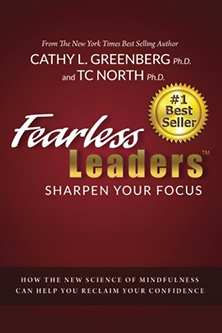12 Techniques on How to Build up your Self-Confidence.
It doesn’t matter whether you’re an athlete, business leader, top sales producer or head of your family. You want to be confident and your best — when it counts the most. Having strong self-confidence (scientifically known as self-efficacy) helps you be your best, even under stress. According to my research, 96% of C-level executives want more confidence at least in their most high-pressure situations. I’ve had similar findings with athletes, sales professionals and entrepreneurs.
There are three general approaches to building self-confidence: (1) with your mind, (2) with your body and (3) by minimizing your confidence saboteurs.
If you would like a video introduction to this article please see below. Or, for the full article, please keep reading.
Build self-confidence with your mind.
- Control your self-talk. Yes, it’s easy to say and hard to do, but you can consciously control some, or most, of your self-talk. Your mind is always listening to your self-talk and programming itself like a computer from this inner talk. To be confident, make sure your inner self-talk creates more, not less, self-confidence. Conscious use of affirmations can be helpful. To learn more, click here.
- Change one word. This can increase your confidence and probability of success when performing under pressure. It’s the difference between first and second-person self-talk. First-person self-talk begins with “I.” Examples of first-person self-talk include “I’ve got this!” and “I can do this!” Second-person self-talk begins with “you,” or by stating your name. For example, “You’ve got this!”, “You can do this!”, “(your name) has got this!” and “(your name) can do this!” The research on this one small change is stunning! A recent research study indicates that this change not only dramatically reduced one’s response to stress, it also greatly improved the amount of successful outcomes! Learn more by watching the video or reading the full article here.
- Use imagery (visualization). It surprises most people to learn that they can consciously strengthen confidence much like strengthening a muscle. To strengthen a muscle, you engage it and fire the neurons to make it contract. Each time you do, the muscle fibers multiply and get larger — you get stronger. Similarly, whenever you think of a time you were confident, you stimulate the neural network in your brain where your confident memory resides. Every time this network is stimulated, its neurons get thicker and make more dendrite connections. Thus they get stronger, and your confidence grows. You can learn how to do this by engaging what may be the most powerful self-help technique to build your self-confidence. For more, click here.
- Use routines. Almost all Olympic and professional athletes use pre-event and pregame routines to help them be their best. Basketball player Kobe Bryant, MVP of the 2009-2010 NBA finals, followed the same routine before every free throw. Three-time Olympic medalist Lindsey Vonn, often referred to as the greatest female American skier in history, creates a clear image in her mind of a perfect run before every race. And in the starting gate, she always clicks her poles together the same way before starting. Why do Olympic and professional athletes work to perfect routines? Because it helps them perform better. Routines can do the same for you. To learn more about developing routines, click here.
- Give and receive compliments with an open heart. Strengthening and weakening confidence is complex, yet there’s one simple way to build it: Learn how to gain confidence by learning how to deeply and fully receive a compliment. Hardly anyone in Western culture fully receives compliments. I catch myself blocking them often, and I teach this stuff. Deflecting compliments runs deep in our culture and starts at a young age. For a touching story about a young girl and how to give and receive compliments that build self-confidence, click here.
- Prepare obsessively. Warren Buffett’s and Peyton Manning’s secret success strategy is the same: They prepare obsessively. I love the juxtaposition of these two men because Peyton Manning is one of the greatest quarterbacks of all time, and Warren Buffet may be the best stock investor ever. Because of their study and preparation, they notice things that other people don’t, and they create more opportunities from these observations. To learn more, click here.
Want to learn the 12 benefits of self-confidence? This is my most popular article – ever. Click here.
Build your self-confidence with your body.
- Be fit or improve your fitness. In addition to improved mood, happiness and self-esteem, one of the many benefits of exercise, backed by research, is a boost in self-confidence. For more, click here.
- Practice using high-power body positions. Harvard professor Amy Cuddy’s groundbreaking book, “Presence: Bringing Your Boldest Self to Your Biggest Challenges,” provides scientific research proving that certain body postures change the hormones that leave you feeling more, or less, powerful and confident. To learn about the high-power body positions that create presence and confidence, click here.
Minimize your saboteurs.
- Learn to stop your negative, destructive thoughts. Uncontrolled negative thoughts not only hurt your confidence but also your relationships, happiness and even career. Learn to stop negative, destructive thoughts and build self-confidence with a simple four-step process. I’ve used this method for three decades; it’s powerful if you keep applying it. To learn this technique, click here.
- Resolve perfectionism. Are high performers perfectionists? Often, yes. Perfectionism certainly helps you become good or great at what you do. However, perfection is unattainable. The downside is that perfectionistic people are often anxious, and that can lead to depression. It’s easy to feel like a failure because you can never achieve perfection. To learn more about the relationship between self-confidence and perfectionism, click here.
- Choose your tribe carefully. Negativity is like a highly contagious virus — it’s hard not to catch it when you’re exposed. Choose to be around positive people who build you and others up. We are all influenced by those around us. Choose your friends, your tribe, carefully!
- Master fear in six easy, yet powerful, steps. Do you have fear of failure, rejection or selling? Or other fears that limit your success, relationships and happiness? Most people do. Irrational fear distorts perception. Imagine wearing red-tinted glasses — everything you see and perceive is red. It’s the same with fear. When you look through a lens of fear, things look like you should fear them. You can master fear of failure, rejection or selling — and other fears! To learn the six steps, click here.
To learn the 12 benefits of self-confidence in my most popular article – ever, click here.


